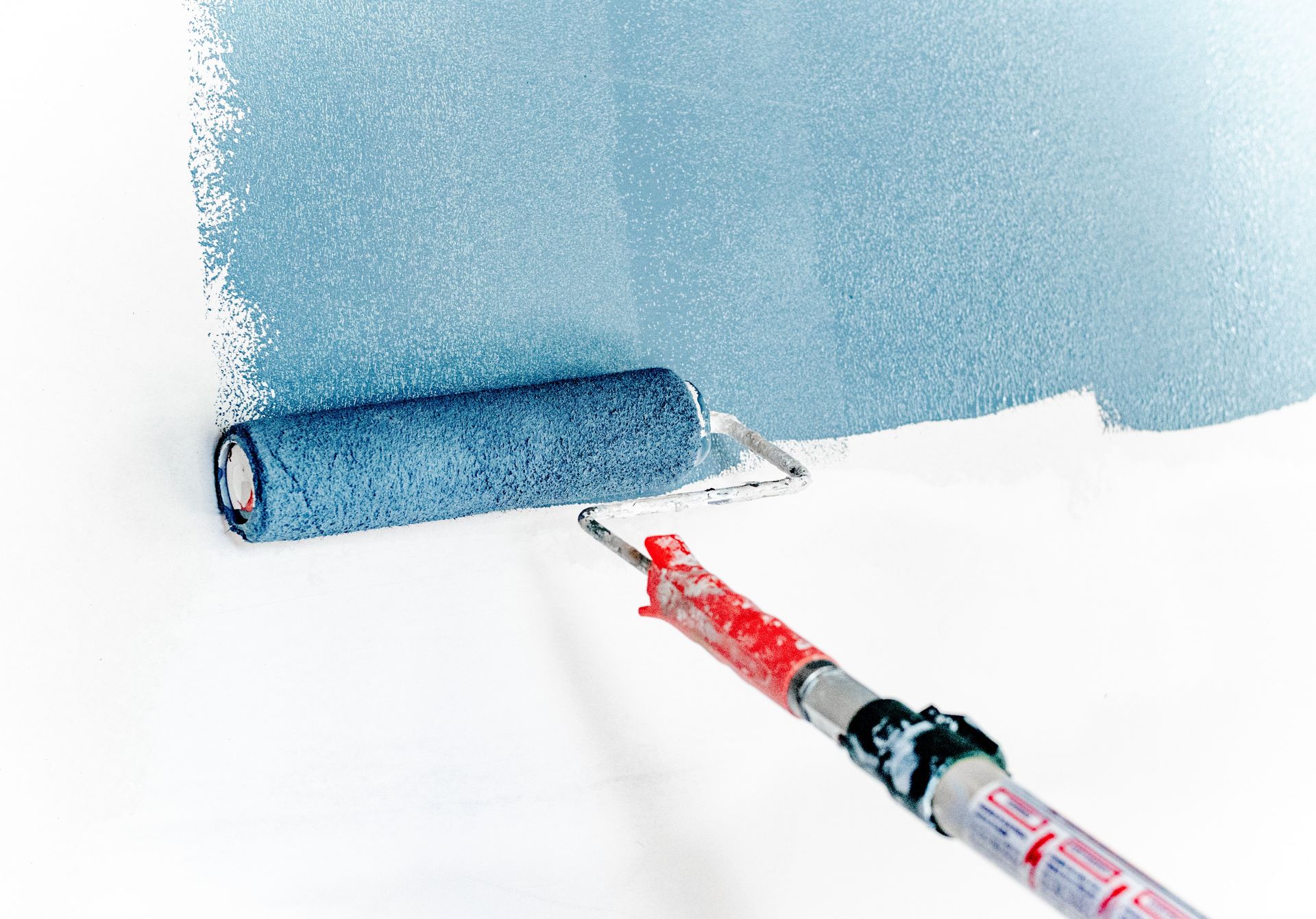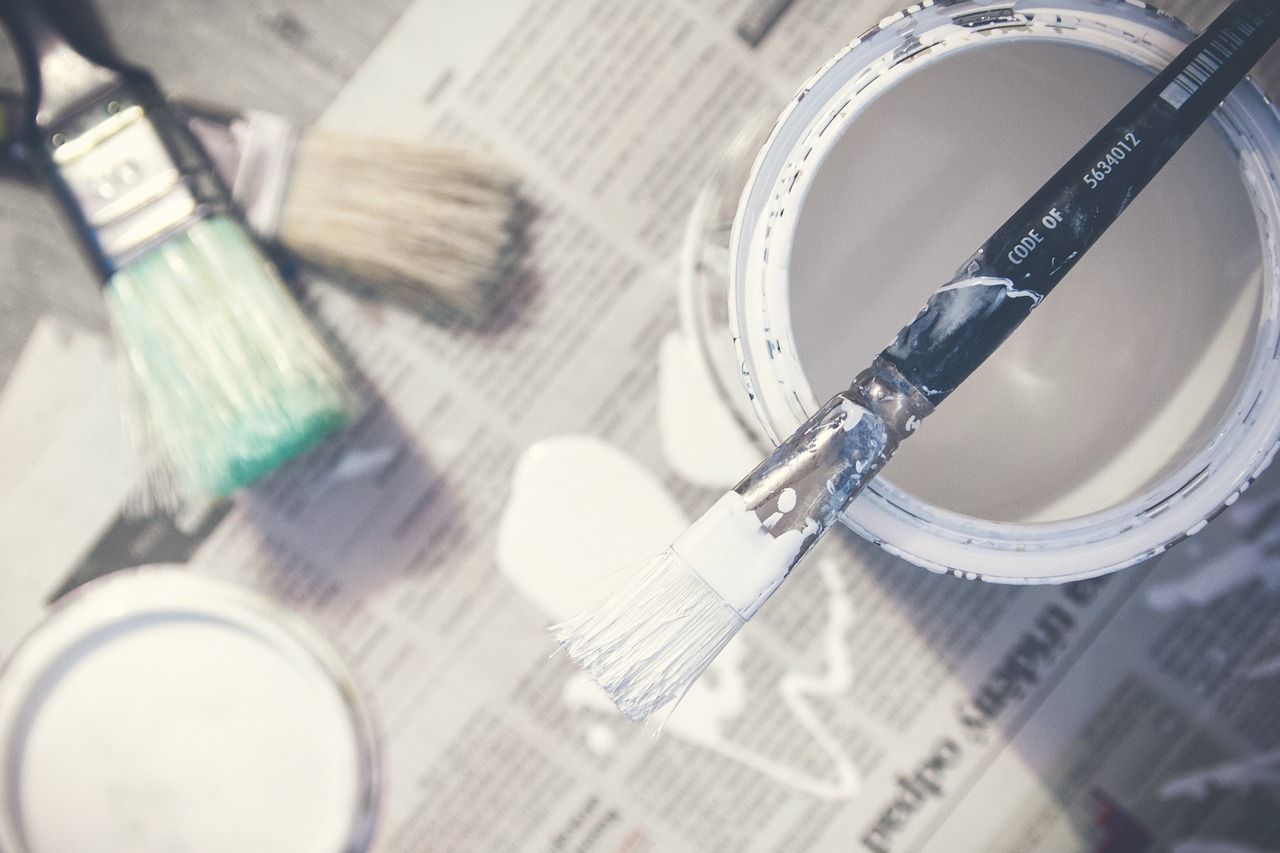How to Find the Best Painters and Decorators Near Me: Home Improvement Made Simple
"The whole of nature is a metaphor for the human mind." - Henry David Thoreau.
When it comes to home improvement projects, the mindset and approach of the homeowner can determine whether the process feels chaotic, like an overgrown forest, or purposeful, like following a winding garden path. Utilizing the right strategies and guidance to plan painting and decorating leads to greater ease and success in bringing your interior vision to life. Just as natural spaces require care and diligence to flourish, so do our home interiors when we invest attentiveness to details throughout design and enhancement efforts.
The previous essays outline key considerations, from initial planning to final touches, allowing homeowners to tap into their creativity in harmony with practical preparation and partnership with experienced tradespeople. Heeding wise tips from those who have navigated the terrain help avoid pitfalls and capitalize on best practices refined over time. With an intentional framework guiding each decision, space by space, you can thoughtfully tend to your home environment and cultivate an aesthetic that feels connected, balanced, and uniquely yours. When we approach home improvement with care and conscientiousness, it ceases to feel intimidating and becomes a satisfying endeavor through which we better know ourselves.

Where should I start when looking for a good painter or decorator in my area?
When it comes to home improvement projects like painting or decorating, finding the right professional to trust with the work is key. There are several places homeowners can look when starting their search for a quality local painter or decorator.
Asking for recommendations from family, friends, or neighbors who have had positive experiences hiring painters or decorators is one of the best ways to find candidates. These personal referrals often carry more weight than anonymous online reviews since you know and trust the person making the recommendation. When gathering referrals, ask about work quality, timeliness, pricing, and cleanup.
Online review sites like Yelp or Angie's List offer homeowners a way to research painters and decorators based on customer feedback. Read positive and negative reviews while looking for trends and patterns regarding professionalism, attention to detail, and meeting budget and timeline expectations. Also, verify the provider's overall rating and years in business.
Local home improvement or hardware stores may partner with painting and decorating contractors they regularly recommend to customers. These stores want repeat business, so they only refer providers who have delivered quality work. Speaking to store associates provides another avenue for getting advice.
Home builder associations like the National Association of Home Builders often connect homeowners to painters and decorators who work on homes under construction. These contractors are used to meeting code and working closely with general contractors. Their experience translates well to interior and exterior painting and decorating projects.
Social media can also help uncover painters and decorators operating in your area. Search for relevant hashtags or location tags on platforms like Instagram or Facebook to view past project photos and read about people's experiences. Vet social profiles for professionalism and positive engagement.
Online listings like Angi or HomeAdvisor allow users to input their zip code or city and browse available painters and decorators nearby. Be sure to filter and compare ratings, years in business, and the total number of reviews. Watch for red flags like extremely limited info.
Taking the time to explore multiple avenues shows homeowners the spectrum of painting and decorating providers available locally. Leveraging recommendations alongside online research puts you in the best position to discover an experienced, reputable painter or decorator for your home improvement project.
What questions should I ask potential painters or decorators before hiring one?
Selecting the right painter or decorator for a home improvement project means asking the right questions during vetting. The provider's responses will help homeowners determine whether they fit the job well. Key questions to ask potential candidates include:
How long have you been in the painting/decorating business? Look for providers with 5+ years of experience at a minimum. This signifies an established business and extensive experience.
Are you properly licensed and insured? Reputable painters and decorators should carry all required licenses for operating in your state. General liability insurance protects homeowners should an accident or injury occur.
Can you provide references from past clients? Speaking to references helps homeowners judge factors like work quality, timeliness, communication, and attention to detail.
Do you provide written estimates? Get quotes and estimates in writing upfront. Beware of extremely low rates that may indicate cutting corners.
What is your availability for this project? Understand their current workload. A packed schedule may mean delays or painting/decorating is not their full-time focus.
What supplies and tools do you utilize? Look for high-quality products and proper tools that indicate a commitment to delivering skilled work.
How do you prepare surfaces before painting/wallpapering? Proper prep work like repairing walls, sanding, masking, and priming ensures better, longer-lasting results.
What are your policies for protecting surfaces, cleanup, and debris removal? Detailed site protection, daily cleanup, and debris removal maintain a tidy workspace and protect homeowners' property.
What payment schedule do you require? Some painters/decorators may require partial upfront deposits. Be wary of full payment required in advance before any work starts.
Do you offer a quality warranty? Reputable providers typically stand behind their work with warranties on labor for 6-12 months.
Thoroughly vetting painters and decorators takes time but gives homeowners confidence they are selecting the best professional. Check licenses, call references, and leverage the questions above when interviewing candidates for your project.
What are signs of a quality, reliable painter or decorator?

Hiring a painting or decorating contractor for your home improvement project is a big decision. Beyond checking required licenses and insurance, you also want a provider who delivers quality craftsmanship. Look for these signs of a reputable, reliable pro:
Detailed written estimates - Quality painters/decorators take time to thoroughly assess your project and provide a written estimate outlining the number of coats, materials, and projected timeframe. Vague verbal estimates can signal cutting corners.
Professional business practices - Established pros have company uniforms, professional online presences, and clear business cards. Disorganized contractors may indicate poor project management skills.
Strong communication skills - Excellent customer communication is key from the initial quote to project completion. Response time to inquiries and providing project updates shows good communication.
Arrives on time - Respecting your time and schedule is a sign of professionalism. Confirm arrival windows, progress updates if running late, and policies around weekend/evening work.
Prep work expertise - Surfaces should be fully inspected, repaired, cleaned, sanded, masked, and primed before painting or decorating. Quality prep prevents problems down the line.
Careful site protection - Reputable providers must use drop cloths, plastic sheeting, careful taping/masking, and erecting barriers to block overspray. Your property should be safeguarded.
Attention to detail - Painting trim neatly, cutting clean lines, avoiding drips, and taking time with faux finishes demonstrates skill. Rush jobs mean inferior results.
Patience - Quality painters and decorators work methodically and deliberately, not rushing through stages. Patience yields better outcomes.
Clean work habits - Keeping the workspace, supplies, and tools tidy and daily cleanup shows respect for your home. Disorganization can lead to accidents or issues.
Knowledge to advise clients - Experts can explain products, sheens, and colors and recommend applications based on the client's space, needs, and preferences. Newer painters may need more depth.
Positive references - Speaking to past clients provides insight into quality, experience, reliability, and customer service. Quality pros should provide great references.
Fair pricing - Quotes shouldn't be drastically under or over-market rates. Avoid prices that seem too good to be true. Reasonable rates for high-caliber work are key.
Strong warranties - Reputable painters/decorators stand behind their labor with written warranties, usually for 1-2 years. Lengthy warranties provide peace of mind on artistry.
Checking for these indicators throughout the quote, work process and post-job helps homeowners feel confident choosing a stellar painting or decorating pro for important home improvement projects. Don't settle for less than excellence.
Are there certain red flags I should watch out for when evaluating painters or decorators?
Though most painting/decorating contractors are reputable, some questionable providers cut corners or use dishonest practices. As you evaluate candidates, watch for these red flags:
No physical business location - Lack of proper business address or office space. Mobile-only contractors may need to be more established.
No references - Quality providers readily share client references. Rejecting requests for references should raise suspicions.
Vague about licensing - Avoid those who balk at showing proof of proper licenses and insurance certificates. Being evasive is a major red flag.
Pushy sales tactics - Beware high-pressure pitches demanding you book immediately or risk missing out on an amazing deal. Reputable firms allow time to evaluate and decide.
Large upfront payments - Requesting 50% or full payment before work begins should make you very wary. Reasonable deposits are 25% or less.
Verbal-only quotes - Legitimate contractors always provide written estimates listing specifics like some coats, products, timelines, etc.
Pricing well below average - Shockingly cheap bids likely mean shoddy materials, little prep, and rushed painting. Reasonably priced proposals are
better.
No detailed contract - Ensure all aspects of the project, like the number of coats, payment terms, timeline, etc., are spelled out clearly in writing before signing.
Lack of proper tools/equipment - Quality painters/decorators invest in tools like ladders, tarps, and specialized equipment for high-quality outcomes.
No cleanup policy - Ensure agreements are made for containing mess, daily clean up, and thorough final clean up when the project is done.
No warranty on labor - The best painters/decorators provide a 1-2 year labor warranty protecting against defects in artistry.
Knowing these warning signs helps homeowners avoid hiring painting/decorating contractors who deliver subpar, potentially unsafe work. Proceed with caution if any red flags appear.
What questions should I ask references provided by prospective painters or decorators?
Checking references is key to vetting potential painters and decorators before hiring one. Speaking to past clients gives insight into their work quality, professionalism, timeliness, and customer service. Here are some recommended questions to ask for references:
How did you find out about the contractor? Learn where they have built a client base - referrals, online ads, partnerships with local businesses, etc.
What type of work did they complete for you? Find out if the reference had similar interior/exterior painting or decorating needs as your project. Relevant experience is ideal.
Were you satisfied with the finished results? Ask for details about the quality of artistry, technique, attention to detail, and overall aesthetics.
Was the initial quoted price accurate? Learn if their final invoice aligned closely with the written estimate originally provided. Dramatic discrepancies are problematic.
Did the project stay on schedule? Timeliness and meeting project deadlines are signs of good project management skills. Delays may signal poor planning.
How was communication throughout the process? Clear, responsive communication is essential. Ask how well they provided project updates and addressed any questions or concerns.
Were there any unexpected challenges or surprises? Understand how they handle adversity - whether minor issues or major snags during a job.
How was the cleanup when the project was completed? Good contractors leave the workspace spotless. Make sure they contain mess throughout and perform a thorough final cleanup.
Did you feel your home/property was respected? Quality contractors should protect homeowner's space, belongings, and surfaces.
Would you recommend them? Ask point blank if they would hire the provider again for future painting/decorating needs to get their overall impression.
Is there anything you wish you had known ahead of time? See if any tips emerge to make the process smoother.
Getting candid feedback by asking the right reference check questions alleviates guesswork when hiring painting and decorating pros. Their past work says a lot about future performance.
How can I protect my property during a painting or decorating project?
Opening your home to painting or decorating contractors requires trust. Reputable providers understand homeowners want their property respected and protected during the project. Discuss these safeguards upfront:
Drop cloths - Floors should be fully covered with canvas tarps or plastic to protect from paint, wallpaper paste, debris, etc. Corners and baseboards need coverage, too.
Furniture/fixture protection - Draping lightweight drop cloths over furniture, fixtures, and appliances prevents incidental paint splatter or overspray.
Surface masking - Painter's tape, masking paper, and plastic sheeting keep paint and wallpaper adhesive off woodwork, cabinets, window frames, ceilings, and baseboards.
Respirators and barriers - When spraying or generating fine dust, protective barriers prevent your HVAC system and indoor air contamination.
Original floor/wall protection - Masonite board shields hardwood or tile floors from ladders, scaffolding, and foot traffic. Padding insulates ladders against walls.
Staging of belongings - Work with the contractor to temporarily relocate fragile decor, valuables, and electronics away from the active workspace for peace of mind.
Garage or exterior work zone - Hazardous activities like paint mixing, spraying, sawing, wallpaper table prep, etc., should be confined to a designated outdoor area.
Vertical containment - Plastic sheeting with sealed seams can fully isolate walls, scaffolding, and lifts during spraying projects to prevent overspray or dust drifting.
Entryway walk-off mats - Contain messes in the work zone by laying down exterior mats and removing dirty shoes. Avoids tracking dust inside.
Daily cleanup policy - The contractor should agree to contain debris and clean the workspace thoroughly at the end of each workday as projects progress.
Waste removal plan - All paint cans, equipment, protective coverings, and leftover materials must be completely removed at the project conclusion for safety.
A little planning and protective measures upfront provide major peace of mind. Make your expectations clear and get contractor agreements for all safeguards in writing before projects commence.
How can I maintain the results of a painting or decorating project?

You've invested significant time and money into your home's painting or decorating project. With proper maintenance and care, you can keep walls, trim, cabinets, and wallpaper looking fresh for years. Here are some tips:
Allow paint to cure fully - Don't wipe or scrub new paint for at least 2-4 weeks after application. Check manufacturer instructions for cure times.
Clean gently - Use only light pressure and soft sponges or microfiber cloths to spot clean painted walls. Harsh scrubbing can leave shiny marks over time.
Address touch-ups promptly - Fixing small scuffs when they happen prevents more extensive damage. Keep leftover paint to enable matches.
Repaint high-traffic areas - Areas around light switches, doors, and backs of chairs eventually need fresh coats of paint from regular wear.
Watch moisture in walls - Prevent paint peeling and moisture damage by fixing leaks promptly and increasing ventilation in humid rooms.
Remove grease/grime regularly - Clean kitchen walls often to avoid the buildup of cooking grease and grime, which can penetrate paint over time.
Adjust cleaning approach for sheen - Matte walls show marks more easily, while semi-gloss and gloss finishes need gentler wiping instead of scrubbing.
Check exterior paint for cracks - Addressing exterior paint cracks quickly prevents moisture from compromising underlying wood siding or trim.
Power wash vinyl siding carefully - Excessive pressure can drive water behind the siding and damage exterior paint. Take precautions.
Recaulk sinks/showers - Prevent mildew from migrating under the caulk onto surrounding wall paint. Keep all bathroom caulking fresh.
Handle wallpaper gently - Never scrub wallpaper. Blot stains gently instead. Washable sealer protects delicate prints from marking.
Care and maintenance go a long way in preserving beautiful painted and decorated walls. Protect your investment with these tips.
Conclusion
In closing, undertaking painting and decorating projects, big or small, ultimately enriches your life within your space. While the task may sometimes feel daunting, remember that, like in nature, each step forward contributes to growth. Maintain perspective on the progress made - even incremental change leads to transformation. Allow the wisdom shared here to steer you through manageable steps so you can thoughtfully create a home that nurtures your spirit and reflects your inner world.
West London's best Handyman services
Reliable all round services including
Curtains Fitting And Installation
useful links

We are helping to save the rainforest,
one acre at a time

Mentoring businesses with the British Library

Helping create an ethical world

Insured by Simply Business













